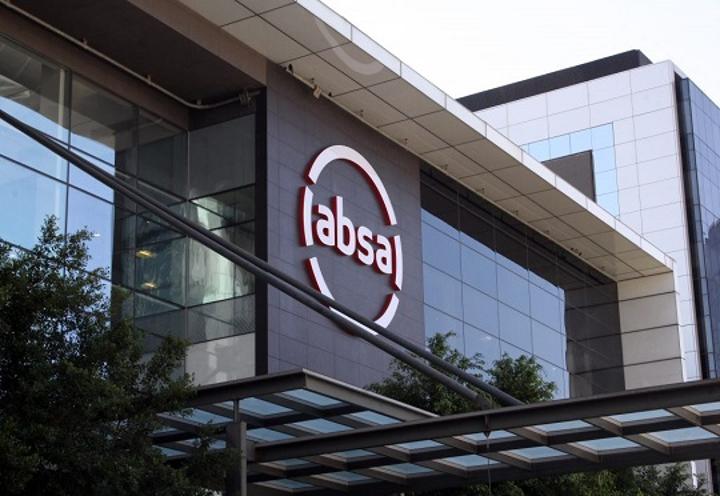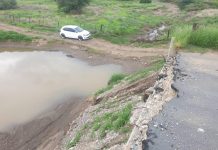Africa-Press – Namibia. Edward West
THE Absa Group lifted headline earnings a solid 27% to N$11 billion in the first half of the year as revenue increased, demonstrating continued recovery from the global economic downturn in 2020, and the half year dividend more than doubled to 650 cents a share.
Edward West
THE Absa Group lifted headline earnings a solid 27% to N$11 billion in the first half of the year as revenue increased, demonstrating continued recovery from the global economic downturn in 2020, and the half year dividend more than doubled to 650 cents a share.
The bank, which set out a strategy in 2018 to gain market share from when it operated under former parent Barclays, saw normalised earnings from South Africa increase 27% to N$9,22 billion, while normalised earnings from the rest of Africa operations increased 36% to N$1,77 billion.
First half pre-provision profit was solid, supported by revenue that rose 14%, underpinned by growth across its business units and supported by a strong rebound in the insurance business in South Africa and increased interest rates across key markets.
Non-performing loans fell marginally to 5,3% from 5,4%.
Chief executive Arrie Rautenbach said the results reflected strategic choices made in 2018 and “the work done to create a business that is closer to customers”.
“We now have a strong foundation for outperformance,” he said.
In June 2022, Absa announced a strengthened and more diverse executive leadership team. The operating model was also refined, adopting a flatter structure, allowing the group to accelerate strategy execution.
Effective last month, Absa has five business units, from two previously. All business units reported improved earnings and stronger returns in the first half.
“Key measures are significantly above the pre-Covid levels of the first half of 2019,” said financial director Jason Quinn.
He added that the bank faces a tougher environment going forward.
Information technology spend grew 11% to N$6 billion. Digitally active customers grew, including a 10% increase to 2,2 million in retail and business banking in South Africa.
Retail and business banking (RBB), the group’s largest revenue generator, saw the operating environment become more difficult in the second quarter, but performance indicators were trending positively.
Home loan registrations, vehicle asset financing and personal loans, among other areas, increased.
Absa claimed market share gains in retail advances including home loans and vehicle asset financing. Its deposit market share was strong at 22%. Customer numbers increased 1% to 9,6 million.
The group said the macro backdrop deteriorated in the past six months and global growth expectations had reduced materially.
“There are considerably higher inflationary pressures across most of the markets in which Absa operates and policy rates are increasing faster than we expected,” said Rautenbach.
He said the bank was likely to report low double-digit revenue growth for the full 2022 financial year compared with 2021.
– IOL News
The bank, which set out a strategy in 2018 to gain market share from when it operated under former parent Barclays, saw normalised earnings from South Africa increase 27% to N$9,22 billion, while normalised earnings from the rest of Africa operations increased 36% to N$1,77 billion.
First half pre-provision profit was solid, supported by revenue that rose 14%, underpinned by growth across its business units and supported by a strong rebound in the insurance business in South Africa and increased interest rates across key markets.
Non-performing loans fell marginally to 5,3% from 5,4%.
Chief executive Arrie Rautenbach said the results reflected strategic choices made in 2018 and “the work done to create a business that is closer to customers”.
“We now have a strong foundation for outperformance,” he said.
In June 2022, Absa announced a strengthened and more diverse executive leadership team. The operating model was also refined, adopting a flatter structure, allowing the group to accelerate strategy execution.
Effective last month, Absa has five business units, from two previously. All business units reported improved earnings and stronger returns in the first half.
“Key measures are significantly above the pre-Covid levels of the first half of 2019,” said financial director Jason Quinn.
He added that the bank faces a tougher environment going forward.
Information technology spend grew 11% to N$6 billion. Digitally active customers grew, including a 10% increase to 2,2 million in retail and business banking in South Africa.
Retail and business banking (RBB), the group’s largest revenue generator, saw the operating environment become more difficult in the second quarter, but performance indicators were trending positively.
Home loan registrations, vehicle asset financing and personal loans, among other areas, increased.
Absa claimed market share gains in retail advances including home loans and vehicle asset financing. Its deposit market share was strong at 22%. Customer numbers increased 1% to 9,6 million.
The group said the macro backdrop deteriorated in the past six months and global growth expectations had reduced materially.
“There are considerably higher inflationary pressures across most of the markets in which Absa operates and policy rates are increasing faster than we expected,” said Rautenbach.
He said the bank was likely to report low double-digit revenue growth for the full 2022 financial year compared with 2021.
For More News And Analysis About Namibia Follow Africa-Press






